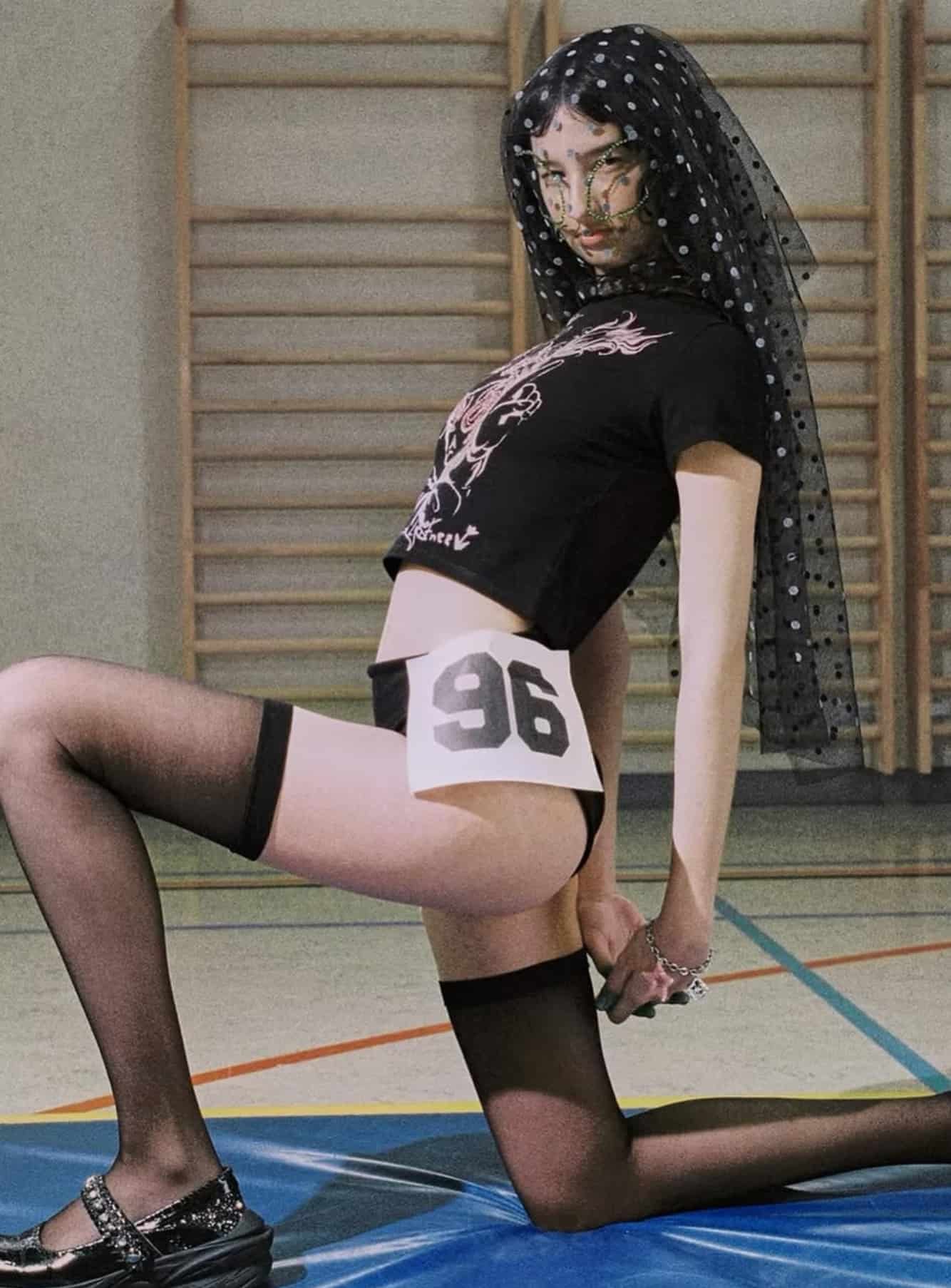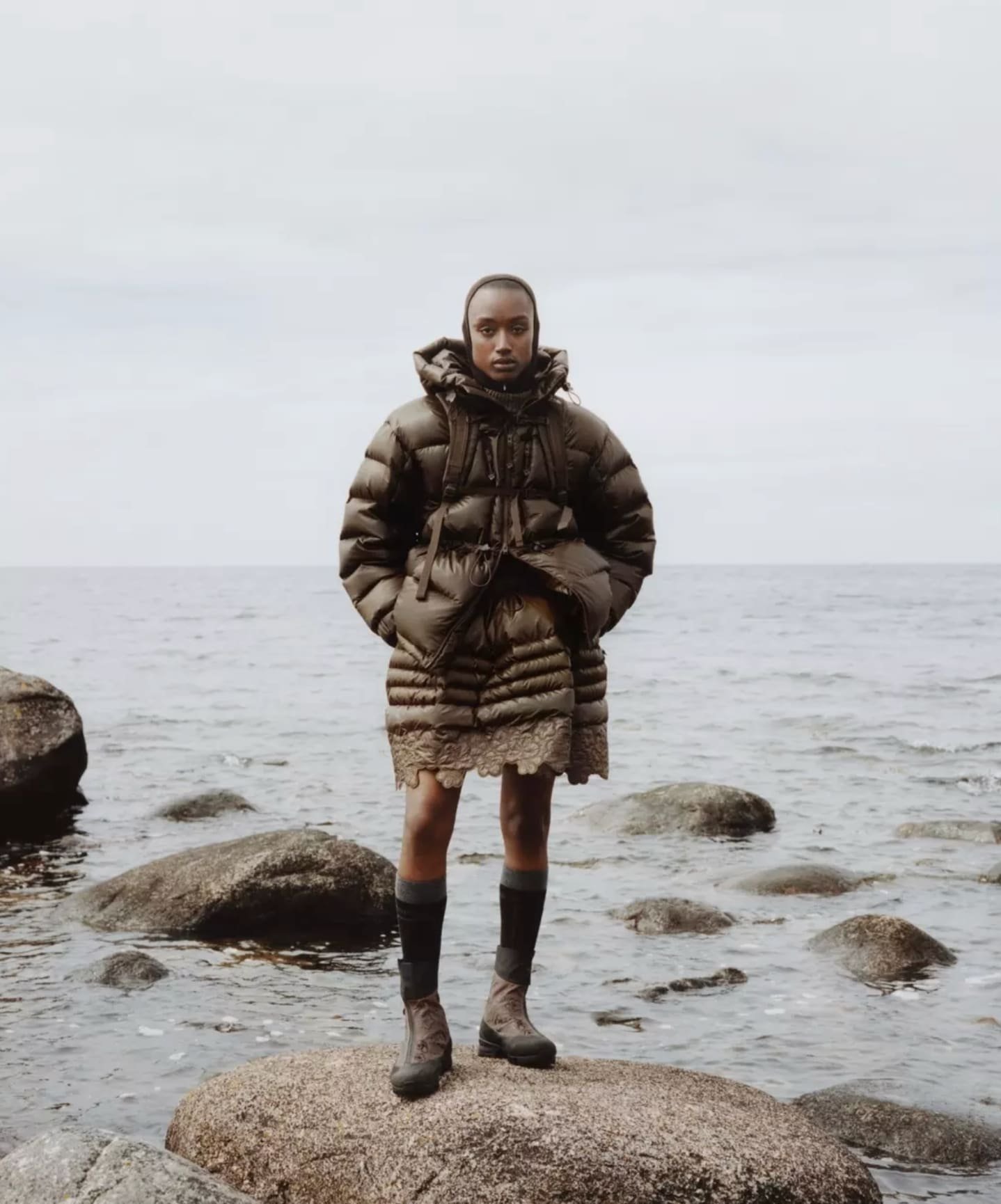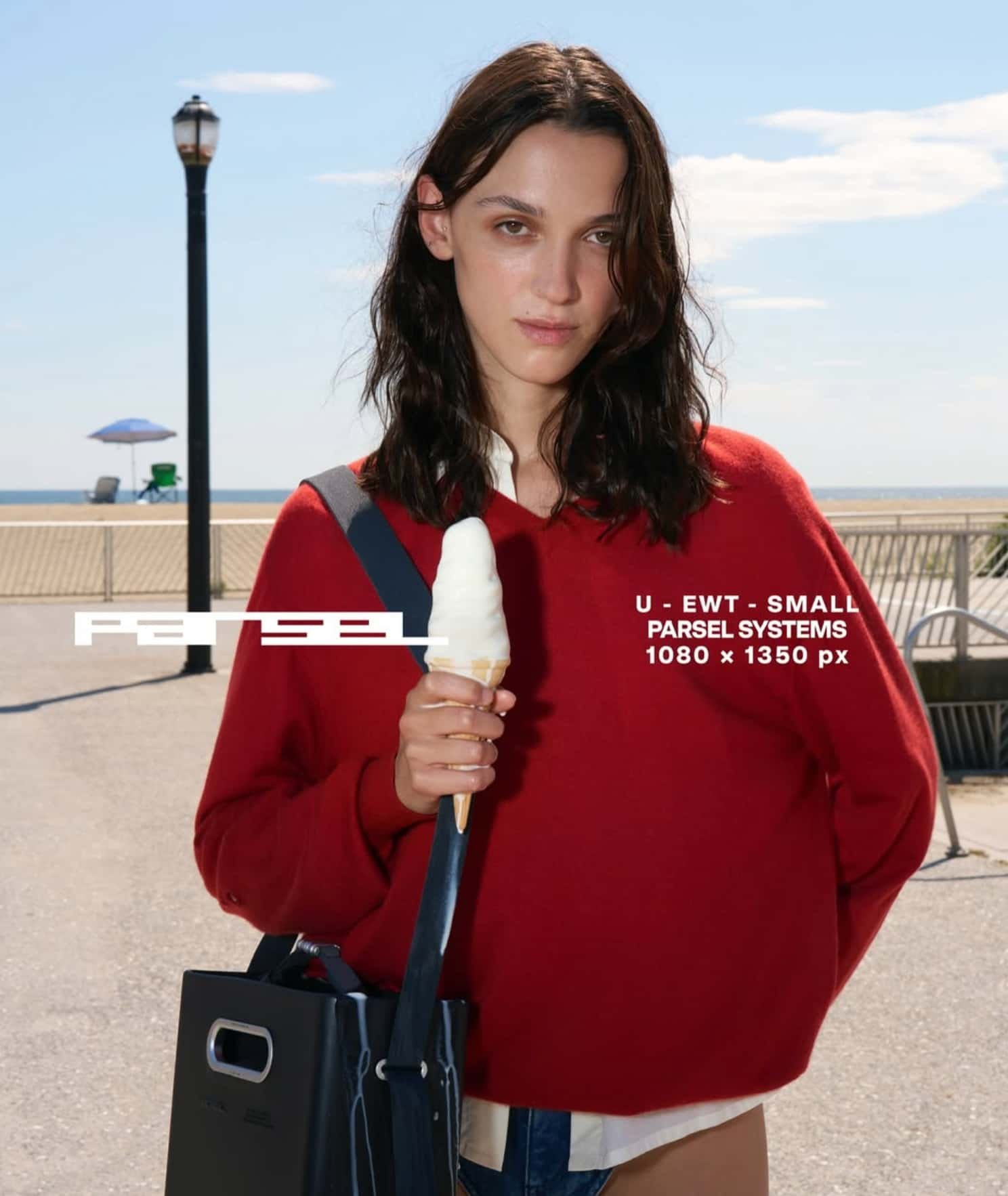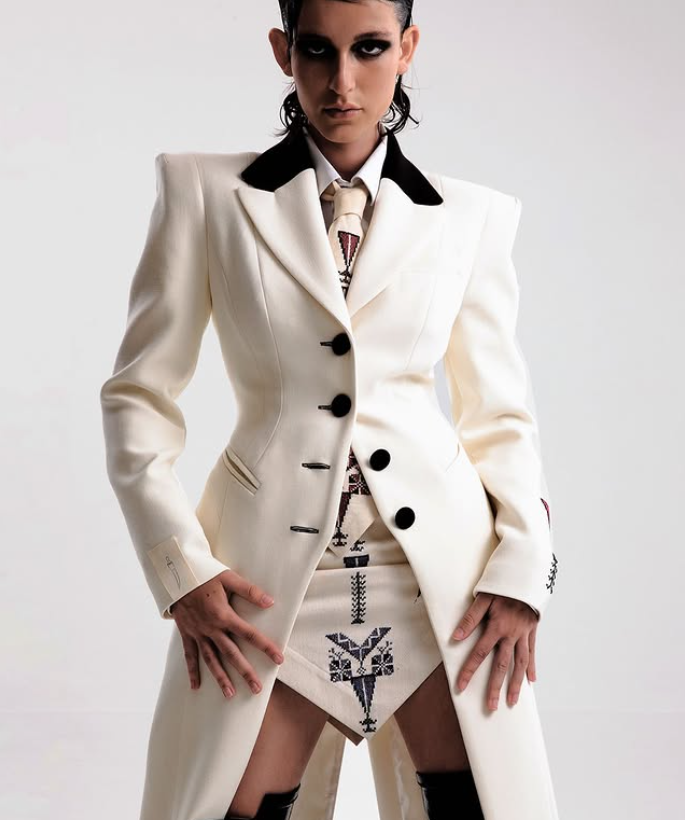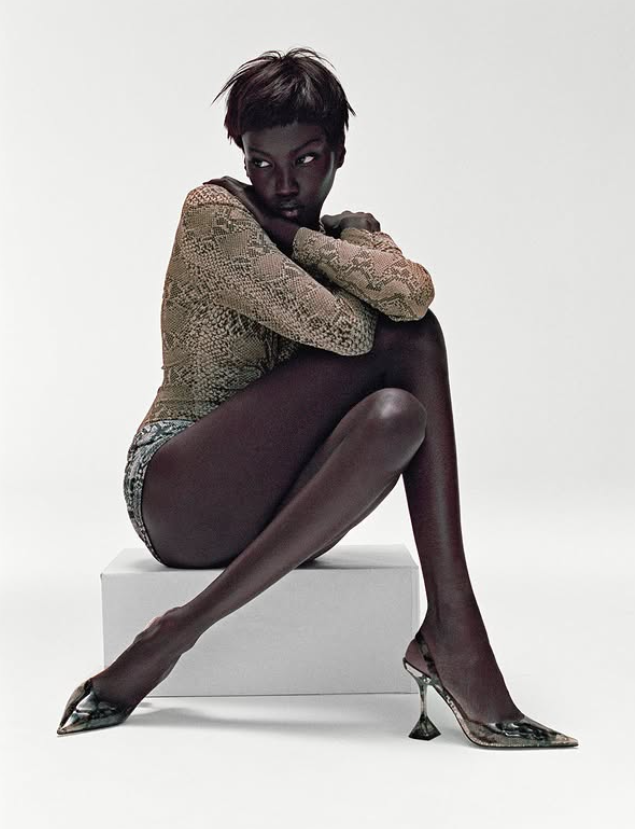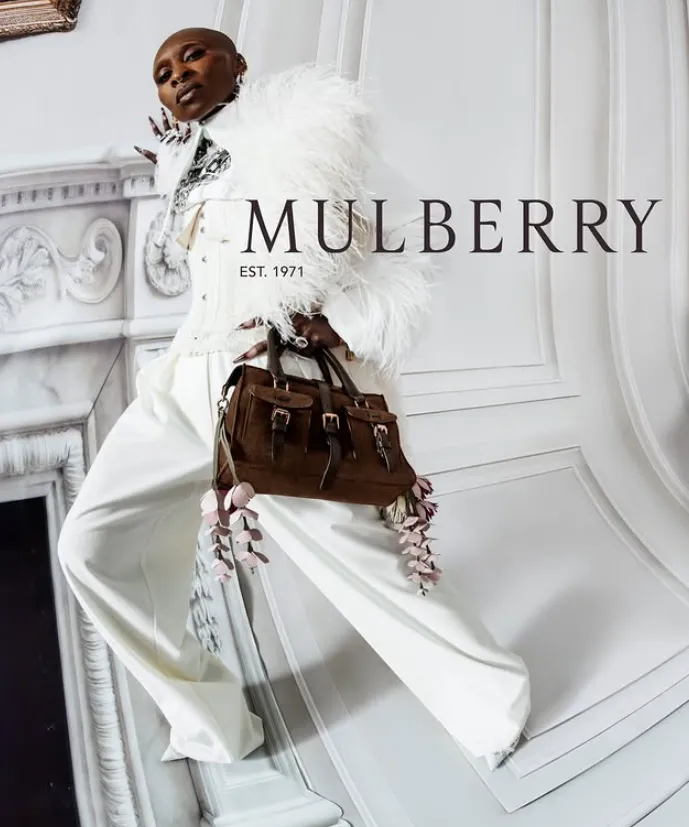Gim Context’s Autumn/Winter 2025 collection arrives less as a seasonal release and more as a manifesto. It does not shout, it does not demand. Instead, it seduces with silence, stillness, and the tactile allure of knitwear transformed into narrative. In an era defined by overexposure and fashion designed for the scroll, Gim Context proposes an alternative rhythm: one of patience, texture, and depth. The new collection and its accompanying campaign remind us that clothing can be more than garments—it can be memory, sculpture, poetry, and resistance against the homogeneity of global style.
At first glance, the collection feels familiar. Knitwear has long been associated with warmth, comfort, domesticity. Yet Gim Context takes this familiarity and reframes it, weaving in provocation and subtle defiance. The pieces are not loud, nor are they decorative in the superficial sense. They are dense, sculptural, designed to command contemplation. Sweaters with generous silhouettes suggest both protection and monumentality. Jackets, meticulously constructed, seem to echo architectural forms. Details that might once have been polished out in commercial production are instead preserved as signs of authenticity—imperfections elevated to beauty.
The intention here is clear: knitwear is not background, not supplementary. It is the central protagonist of Gim Context’s story. Threads become lines of poetry; stitches become punctuation marks in a sentence written on the body. Each garment is a fragment of a larger novel, a chapter in an unfolding exploration of how clothing can shape emotion and identity.
The campaign photography reinforces this idea with striking clarity. These are not images designed for e-commerce; they are images that demand the gaze of a viewer willing to pause. The visual field is stripped down to essentials: blank backdrops, uncluttered compositions, light that reveals rather than flatters. The model appears less as subject than as vessel, surrendering identity to highlight texture and silhouette. The quiet intensity of the imagery recalls the editorial pages of cult magazines—those independent publications where fashion is framed as cultural artifact, not seasonal commodity.
This is perhaps Gim Context’s most radical proposition. In a world saturated with fashion images designed for maximum immediacy, for the dopamine hit of a scroll, this campaign chooses restraint. The photographs are almost still-lifes, frozen tableaux that resist consumption at speed. Stillness itself becomes a manifesto: to slow down, to look, to linger. To engage with the garment not as a product, but as an experience.
To understand the weight of this approach, it helps to look at Gim Context’s trajectory. From the beginning, the project has framed itself less as a brand and more as an ongoing experiment in storytelling through knitwear. Previous collections featured backpacks entirely knitted by hand, T-shirts embroidered with playful yet poignant graphics, sweaters that resembled abstract maps of memory. Each piece carried an element of narrative, as if the designer were writing with yarn rather than ink. The Autumn/Winter 2025 collection continues this lineage but expands the scale. Where earlier pieces leaned into wit and intimacy, AW25 feels heavier, more monumental, as if the brand has found the confidence to push knitwear into sculptural territory.
Gim Context’s Autumn/Winter 2025 collection arrives less as a seasonal release and more as a manifesto. It does not shout, it does not demand. Instead, it seduces with silence, stillness, and the tactile allure of knitwear transformed into narrative. In an era defined by overexposure and fashion designed for the scroll, Gim Context proposes an alternative rhythm: one of patience, texture, and depth. The new collection and its accompanying campaign remind us that clothing can be more than garments—it can be memory, sculpture, poetry, and resistance against the homogeneity of global style.
At first glance, the collection feels familiar. Knitwear has long been associated with warmth, comfort, domesticity. Yet Gim Context takes this familiarity and reframes it, weaving in provocation and subtle defiance. The pieces are not loud, nor are they decorative in the superficial sense. They are dense, sculptural, designed to command contemplation. Sweaters with generous silhouettes suggest both protection and monumentality. Jackets, meticulously constructed, seem to echo architectural forms. Details that might once have been polished out in commercial production are instead preserved as signs of authenticity—imperfections elevated to beauty.
The intention here is clear: knitwear is not background, not supplementary. It is the central protagonist of Gim Context’s story. Threads become lines of poetry; stitches become punctuation marks in a sentence written on the body. Each garment is a fragment of a larger novel, a chapter in an unfolding exploration of how clothing can shape emotion and identity.
The campaign photography reinforces this idea with striking clarity. These are not images designed for e-commerce; they are images that demand the gaze of a viewer willing to pause. The visual field is stripped down to essentials: blank backdrops, uncluttered compositions, light that reveals rather than flatters. The model appears less as subject than as vessel, surrendering identity to highlight texture and silhouette. The quiet intensity of the imagery recalls the editorial pages of cult magazines—those independent publications where fashion is framed as cultural artifact, not seasonal commodity.
This is perhaps Gim Context’s most radical proposition. In a world saturated with fashion images designed for maximum immediacy, for the dopamine hit of a scroll, this campaign chooses restraint. The photographs are almost still-lifes, frozen tableaux that resist consumption at speed. Stillness itself becomes a manifesto: to slow down, to look, to linger. To engage with the garment not as a product, but as an experience.
To understand the weight of this approach, it helps to look at Gim Context’s trajectory. From the beginning, the project has framed itself less as a brand and more as an ongoing experiment in storytelling through knitwear. Previous collections featured backpacks entirely knitted by hand, T-shirts embroidered with playful yet poignant graphics, sweaters that resembled abstract maps of memory. Each piece carried an element of narrative, as if the designer were writing with yarn rather than ink. The Autumn/Winter 2025 collection continues this lineage but expands the scale. Where earlier pieces leaned into wit and intimacy, AW25 feels heavier, more monumental, as if the brand has found the confidence to push knitwear into sculptural territory.





